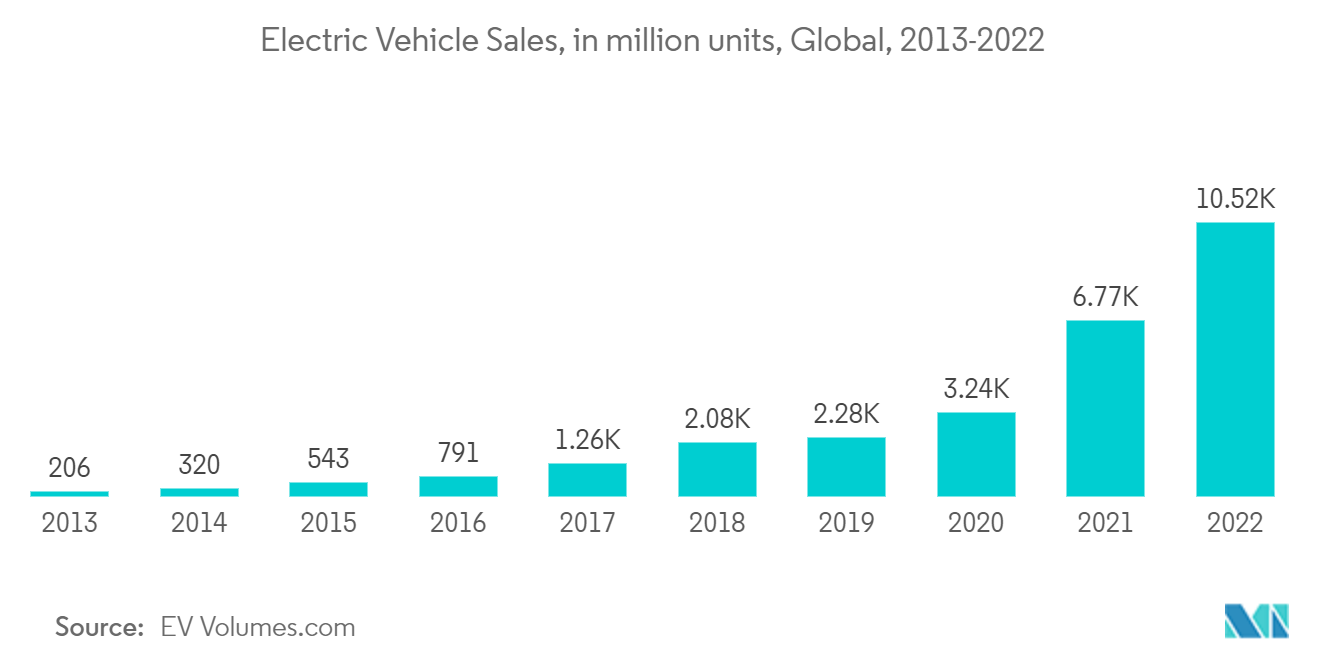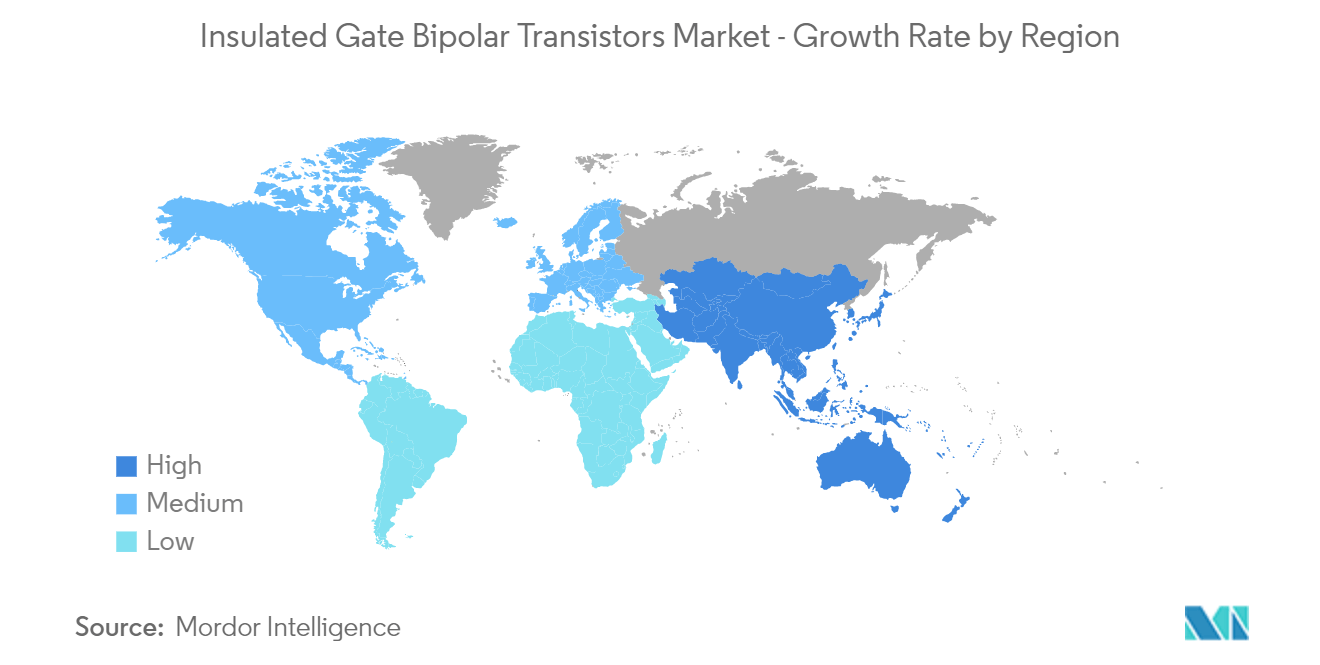Market Trends of Insulated Gate Bipolar Transistors Industry
Automotive and EV/HEV to Register Significant Growth
- In recent years, the automotive industry has imposed stringent reliability constraints on power electronic systems, focusing on cost-effective solutions. Beyond those typically associated with vehicle electrical and electronic systems, the high voltage and high current required in hybrid electric vehicles (HEVs) and electric vehicles (EVs) present technical challenges for power conversion. In accordance with this, IGBTs have assumed a crucial role in ensuring the dependability of the HEV powertrain due to their high internal electric fields and susceptibility to significant junction temperature swings.
- IGBT modules are required to convert electricity from one form to another, allowing for the convenient and secure use of the energy by many items used by people daily, including electric cars. The IGBT power module is regarded as the "heart" of the electrified drive train in electric vehicles.
- The IGBT in an electric vehicle is used in the motor inverter as a switch. It is typically connected directly to the traction motor in an electric vehicle because it is a high-voltage, high-current device. The massive growth of the EV market in various regions is expected to drive growth in the regional IGBT market. For instance, EV volumes estimated that 10.5 million new BEVs and PHEVs were to be delivered in 2022, an increase of +55% from 2021.
- The Insulated Gate Bipolar Transistor (IGBT) has emerged as a key player in the development of electric vehicles. In the upcoming years, it is anticipated that the demand for IGBTs will rise significantly due to the rise in EV sales. For instance, a recent report from the International Energy Agency projects that by 2030, 125 million electric cars will be on the road worldwide because of favorable policies and falling prices. As a result of these developments, IGBTs will be in demand to meet the needs of EVs.
- Moreover, with the EV market's growth, many vendors are increasing their R&D expenditures and concentrating on supporting the H/EV market by developing, integrating, and manufacturing cutting-edge solutions for traction drive and control applications. Businesses are constantly developing high switching frequency and short-circuit rating products to support durable and effective automotive designs.

Asia Pacific is Expected to Witness Significant Growth
- In Asia-Pacific as well as globally, China is the largest consumer of semiconductors, primarily owing to the size of its domestic electronics industry. The country is the largest producer and exporter of consumer electronics in the world. Thus, it is one of the most prominent regions for the market, as MOSFETs and IGBTs are used in a wide range of electronic devices.
- The electronics manufacturing industry has also continued to maintain steady expansion in recent times. As per a report by the China Academy of Information and Communications Technology, during the two months from January to February 2022, the added value of major electronics manufacturers rose 12.7% year-on-year, compared with the 7.5% growth seen in the overall industrial sector in the country.
- The country has the largest manufacturing industry in the world. China's industrial output grew by 3.6% in 2022 from the previous year, as per the Ministry of Industry and Information Technology (MIIT), despite production and logistics disruptions from COVID-19 curbs. The output of the manufacturing sector was estimated to have risen by 3.1% in 2022, accounting for 28% of China's gross domestic product (GDP), according to the MIIT. As MOSFETs and IGBTs find widespread use for motor control applications, the sector is expected to continue creating significant demand for the market.
- China also leads in 5G adoption globally. As per the GSMA, the number of 5G base stations in China exceeded 2.3 million at the end of 2022, including around 887,000 built during the year. The country will be the first market with 1 billion 5G connections, reaching the milestone by 2025, as per the organization.
- In Japan, the automotive industry accounts for a significant share of the total demand for semiconductors in the country, having emerged as the 5th largest automobile market in 2022, as per the German Association of the Automotive Industry, or VDA. The automotive industry's migration from fossil fuel vehicles to hybrid and electric vehicles drives the demand for power devices.
- For instance, in April 2022, DENSO Corporation, a mobility supplier, and United Semiconductor Japan Co., Ltd. ("USJC"), a subsidiary of global semiconductor foundry United Microelectronics Corporation, announced that the companies had agreed to collaborate on the production of power semiconductors at USJC's 300 mm fab in order to serve the growing demand in the automotive market.


